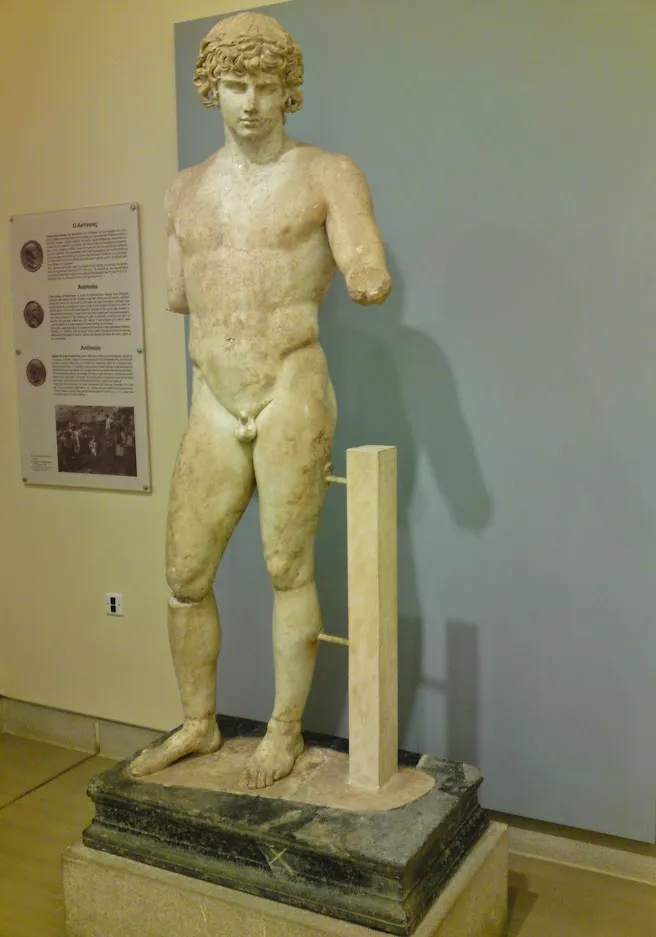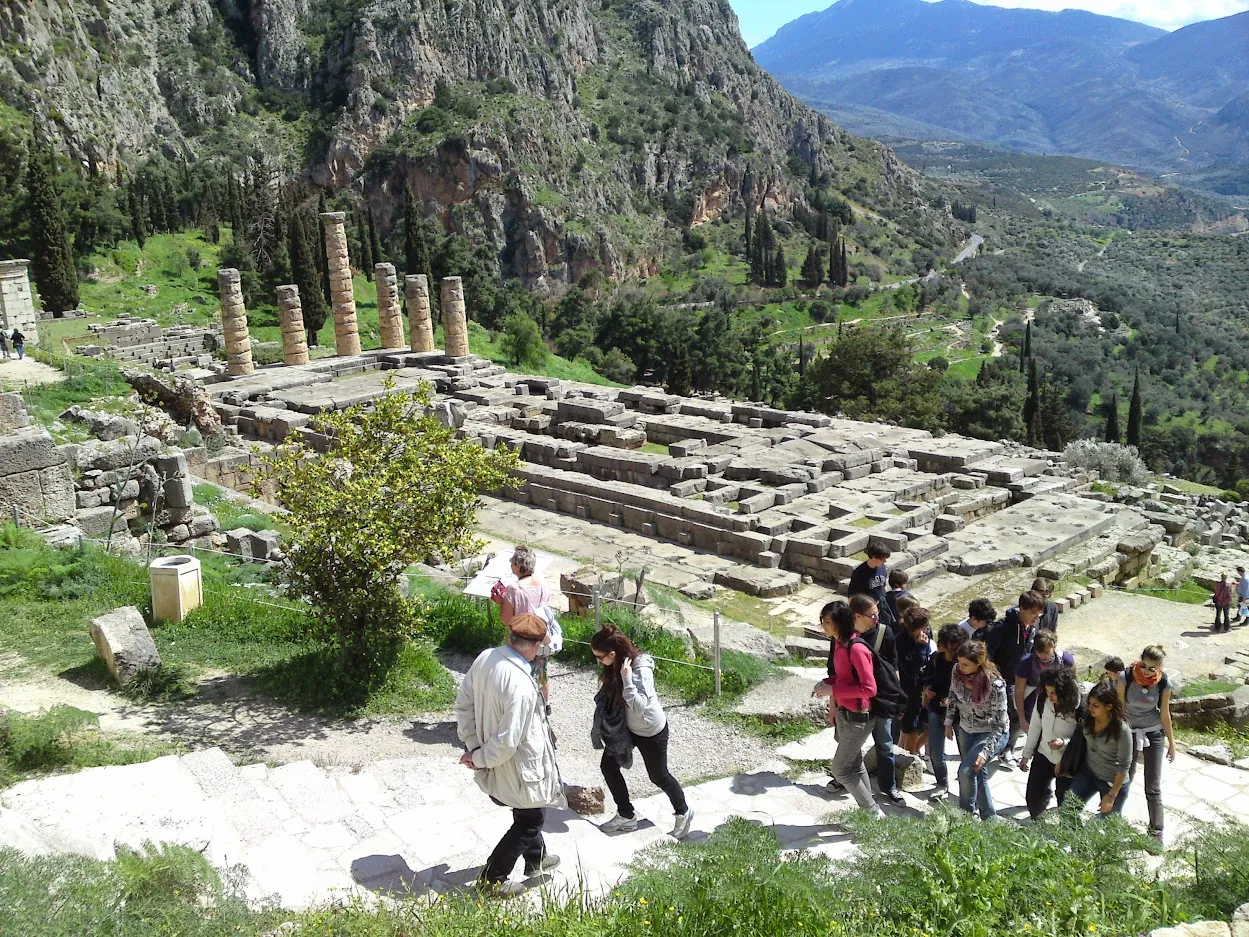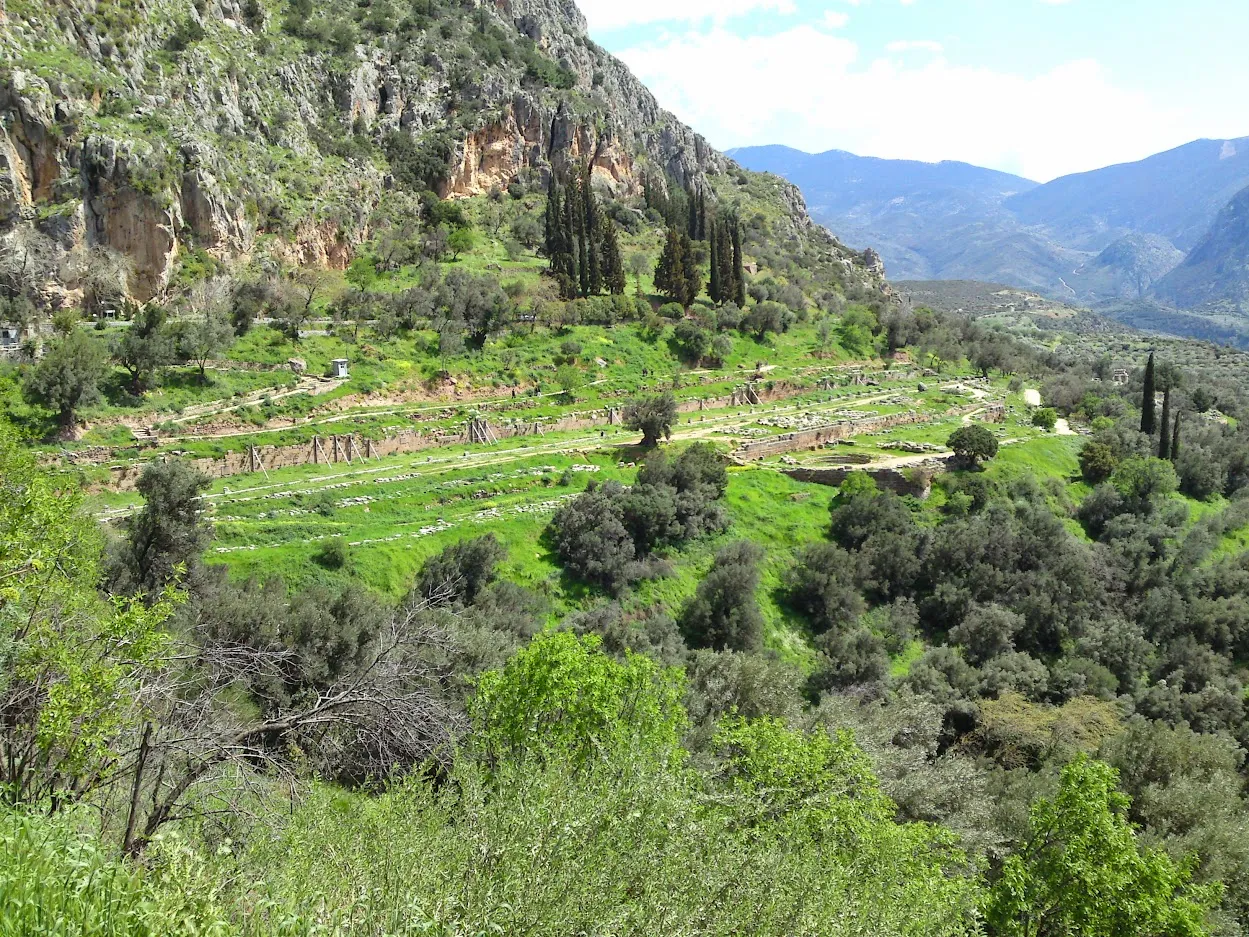Ancient Greeks definitely considered Delphi as "navel of the world", a place which also was their most important oracle after 8th B.C. . The day you'll visit this important ancient site (if you hadn't already) you may understand why. It is a 160km ride from Athens which I propose you to make it more scenic by following the non toll E962 road which climbs the east side of Pateras mountain. Regardless the route the last quarter of the ride is nice anyway and gets better the closer you get to Arahova, a great choice for a lunch later especially if you are not e vegeterian. Pick a weekday of Spring and thank me later for the flower party you'll experience.
No image can precisely transfer the energy you feel when you arrive arrive at Delphi (or any place actually) but if you like rock formations dressed in shades of green you can't go wrong:

Personally I love the view when you have the site on your back looking South East at the valley:

No surprise this very scenic location attracted people since 4000 B.C. The local museum hosts some of the most breathtaking, state of art, supernatural marble statues found in Greece. Like this one, the "Sphinx of Naxos":

The next image gives you a better idea about the statue's size compared to the visitors of the museum:

"Naxos" is the Greek island which donated this 6th B.C. creation to the Oracle of Delphi. "Spinx" (Σφίγγα) comes from the Greek word "σφίγγω" (strangle) and she was actually a demon of destruction and bad luck in the ancient Greek mythology.
There's more good intended statues in this museum, like the "Twins from Argos":


Sorry for the not always exactly perfect angles but trying to capture them without any people around is a challenge and now you know why these guys (Kleobis and Biton respectively) are among the attractions of the museum (killer outfit right?).
Not all statues are supersized but all items deserve attention:


Outside the museum it's Spring's turn to impress once more:

Climbing up the ancient site of Delphi one can enhance this already nice view with some of the most important antiquities of Hellas:

One of them is obviously the Temple of Apollo:


If nothing else the temple's history is rich and beyond bumpy: Initially built at the end of 7th B.C, it was burnt down half a century later, reconstructed near the end of 6th B.C. to be ruined again by an earthquake in 373 B.C. A few years later the present temple was built but this also suffered from several invasions during the 1st B.C. Thanks to emperor Domitian it was later restored.
Look at its adorable columns with this stunning background:

Next to the temple of Apollo is the theater of Delphi, an amphitheatre with a capacity of 5000 spectators. Historians believe that initially it had either wooden seats or people just sat on the ground but during the 4th B.C. it got the rows of stone that we can see today:


South of Apollo's Temple is the "Treasury of Athenians", a small but well preserved marble building from the early 5th B.C. with which Athenians wanted to emphasise either the prevailing of Democracy in Athens or their victory against Persians in Marathon. In any case it's such a beautiful piece of antiquity:



Leaving the site behind and walking South East to the other side of the main road will bring you to the Gymnasium of Delphi, an athletic building complex of the 4th B.C. I love the overview of it from the road:

And if this isn't impressive enough after the previous beauties you'll definitely be amazed by the Sanctuary of Athens Pronaia:

This masterpiece is a complex dedicated to Goddess Athena. In the middle of the above image you see the round construction of "Tholos of Delphi" which is the part of the complex that survived the most compared to the other ruins. Here's a closer one with its 3 (of the original 20) still standing Doric columns:

One more picture of Tholos taken with the Temple of Athena behind me and Spring's wonderful carpet complimenting the site:

The Temple of Athena has a parallel and as bumpy history like the Apollo's does, as it also suffered from humans and earthquakes and was also rebuilt over the years.
Keep in mind that Delphi is also a world heritage UNESCO site.
Last but not necessarily least, nature has its share in showing you how old things can be. Look at that olive tree:

Who knows how many centuries ago it used to be just a tiny ambitious seed.
Hope you enjoyed it, see you on the next one!
